Visiting Stewart Tavener of Xaudia, Part 1
- September 29, 2022
Stewart Tavener is one of the world’s most renowned ribbon mic specialists. His website Xaudia.com is part shop, part second-hand store, and part microphone encyclopedia. Whether it’s an old American classic, an Italian curiosity, or a Chinese-made copycat, there is a good chance that Stewart knows the particular microphone in all its details. Having worked on thousands of ribbon mics over the years, he acquired vast knowledge about the advantages and disadvantages of each model. We visited Stewart in his workshop in York.
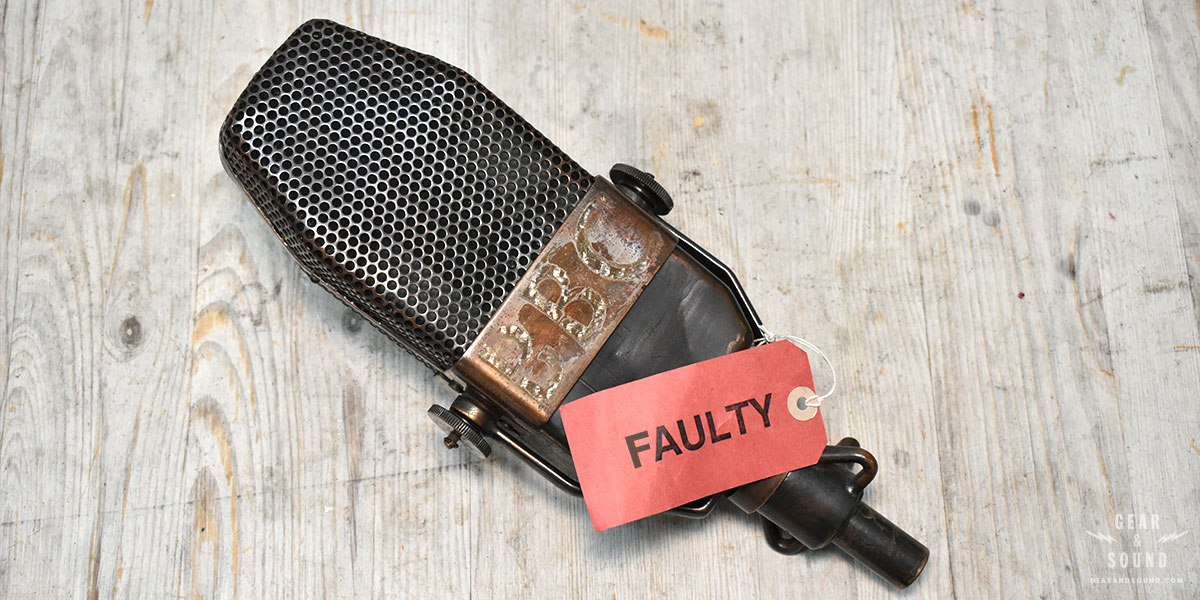
Ribbon microphones are en vogue like never before in history, but things are getting complicated when it comes down to servicing those lovely bastards. Many traditional manufacturers don’t exist anymore, and when brands like Melodium, RCA, or Bang & Olufsen stopped production, many technical details got lost.
Still, the construction of a ribbon mic is pretty simple. Most of the time, it only consists of a magnet, a thin metallic ribbon, and a transformer. So the chance to get an old ribbon mic back to life is much higher than with other kinds of mics. For example, when repairing condenser mics like the Neumann U47, one can spend thousands of Euros just for the VF14 tube, not even mentioning the condition of an M7 capsule after decades in the studio.
Xaudia is a repair shop that can make new ribbons and transformers to replicate the original parts, and there are often ways to improve the magnetic field if required.
Classic ribbon mics looking for help!
Years ago, I discovered Stewart’s blog and I heard his name regularly when talking with colleagues. So I reached out to him after we acquired a bunch of old ribbon microphones for our studio that needed repair.
The models couldn’t be more different from each other, as you can see:
– A legendary BBC Marconi AXBT ribbon microphone, made in England in the 1940s
– A rare Philips 9559 ribbon microphone, made in the Netherlands in the early 1950s
– A very unique Melodium Type R ribbon microphone, a round predecessor of the Melodium 42B from the 1940s
– A classic RCA 44 BX ribbon microphone, the legendary mic from the 1940s used by Sinatra, Elvis, and many more.
– A Melodium RM6 from the 1960s with a much smaller form factor
– Last but not least, a Bang & Olufsen BM5, a stereo ribbon microphone from Denmark made in the early 1970s.
What becomes instantly apparent when dealing with those old ribbons is the progress of magnets over a few decades, thanks to new alloys. As the magnetic field grew stronger, the housing shrank. So while a Phillips 9559 and a BBC Marconi have massive magnets and weigh over four kilos each (!), the RM6 and B&O BM5 look tiny in comparison.
As a matter of fact, all our microphones suffered from different symptoms like low or distorted output. So, as we intended to use them in the studio, we headed to York to visit Stewart at his workshop, loaded with several kilos of microphones!
A heartfelt welcome
Stewart gave us a very heartfelt welcome and showed us around his new workshop, where he works with his two colleagues, Adam Watson and Paul Elliott. Next to the big loft-like space that also includes a small studio area full of vintage equipment, Stewart has a storage filled with dozens of boxes: “The demand is crazy at the moment. In here, I have 80 parcels filled with mics waiting for repair. So I’m basically booked out for the rest of the year”, he said.
He’s also got a room for making tools, one for acoustic measurements, and a kitchen to make great coffee and tea of course (it’s England, right?). So after our little tour and with a coffee in hand, we jumped right in. Stewart started to take care of the Philips 9559, as this particular microphone hardly had any output at all.
“Those Philips 9559 are very rare. Since I started in 2007, I only had maybe half a dozen of them on my bench,” Stewart noted. Nevertheless, he took the microphone apart at light-speed as if he worked with it daily. “I own one of these in my personal collection. Their construction is unique.” Besides being unique, the design is also highly complex, and while Stewart was working on it, I asked myself If he would ever be able to put all those fiddly screws and tiny metal parts back together (spoiler alert – he did, in the blink of an eye).




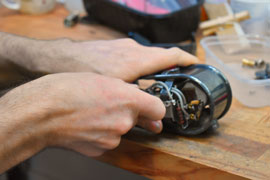
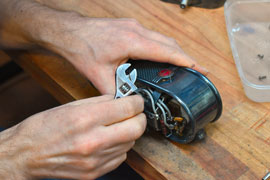
The culprit was quickly found: “the ribbon is not original anymore. Somebody must have changed it already in the past. It looks like kitchen foil to me, which is, of course, much too thick to be used in ribbon mics. Kitchen aluminum foil is around ten times heavier than the thin foil used in ribbon microphones. We mostly work with foils between 1 and 2.5 μm. The lighter the ribbon, the hotter the output so the weight affects the output level proportionally.”
To better illustrate the thickness of a micrometer: A human hair is between 20 and 40 μm, so it is a giant monster compared to a ribbon. The thread of a spider’s web is similar, with a thickness of 2-3 μm. Stewart leafed through a notebook of aluminum foils and showed me their different thicknesses. The foils were rolled onto paper so they could be cut to individual sizes. Stewart handed me a foil strip, and I couldn’t believe how thin this material was. Of
course, I immediately tore the ribbon apart the first time I tried to hold it. As the foil is more delicate than the thread of a spider’s web, that was to be expected… And it made me wonder how come, in all my years dealing with ribbons, I never ever broke one inside a microphone – but maybe I was just lucky?
“If you don’t actively blow into it, and as long strong winds don’t hit the ribbon, nothing should happen to it,” said Stewart.
Before taking care of a new ribbon, he meticulously cleaned all the individual parts of the Philips 9559. “The magnets can attract metallic dust or small particles over time. These must be removed so that the ribbon can vibrate freely. The metal clamps in which the ribbon is tensioned also must be cleaned.
Due to its construction, a ribbon microphone delivers an extremely low current. Therefore, all conductive parts have to be in perfect condition, otherwise the current will meet resistance. Clamps will oxidize over time, and any resistance immediately translates into higher noise levels.” Indeed, after Stewart’s treatment, the metal parts shined and looked like new again.
Renewing the ribbon
The next step was to define the ribbon’s size and ensure that its width does not touch the magnets. Stewart always measures the gap between the magnets and subtracts about 0.2 millimeters from it, leaving a space of 0.1 mm on each side.
“If the ribbon is too far away from the magnet, the output is reduced; if it is too close and touches the magnet, scratchy noises and distortions occur.
Especially with older microphones from the first half of the last century when machine manufacturing wasn’t very precise, you’ll find that the magnets’ gaps vary greatly within the same model. Take the RCA 77, for example. I’ve measured ribbon gaps between 1.1 and 1.5 millimeters in this legendary mic. That’s a difference of over 25%, which of course, affects the sound.
Nowadays, inaccurately crafted models would probably go to the trash, but back then, just after the war, nothing was thrown away lightly. And after all, the mics still worked. It’s just that they all sound a little bit different”, he said with a smile.
Stewart corrugated the newly cut aluminum strip for the Philips 9559 with a zig-zag pattern and connected it to the clamps. A zig-zag pattern allows a ribbon to move freely back and forth. If you simply take a straight aluminum strip instead, it will have no margin to move and will break at the slightest impulse of movement.
You can see the yearlong experience when Stewart perfectly fits the tiny corrugated ribbon into the gap.
At this point, I was wondering what it means to “tune” a ribbon microphone. ” Tuning is directly related to how tightly the ribbon is stretched. You always reach the ideal point when you stay slightly below full tension. Then you’re in the ideal range. Sometimes I measure that value with my electronic equipment, and sometimes I do it be feel and by ear. After thousands of repairs, that’s where my years of experience come into play.”
Before reassembling the microphone, Stewart replaced old foam parts that had deteriorated through the years. He also suggested deactivating a built-in high-pass filter in the electronics to get the entire signal, which is of course, what I wanted.
Additionally, I asked him about the option of fitting an XLR connector into the shaft of the old Philips plug. And as nothing seems impossible for Stewart, he immediately took the measurements and got to work. As the original transformer offered three settings of 200 Ohm, 500 Ohm, and 10.000 Ohm, Stewart suggested using the 500 Ohm output for the XLR connector.
So now the Philips 9559 can even connect to modern equipment!
“Sounds vintage” was Stewart’s impression after listening to it for the first time, and sure it does sound like old brandy somehow. A certain emphasis on the mids makes everything sound charming and full of character. For sure, The Philips 9559 has a distinctive sonic signature, and it is not a mic for every purpose but it definitely adds a lovely color palette to the toolbox.
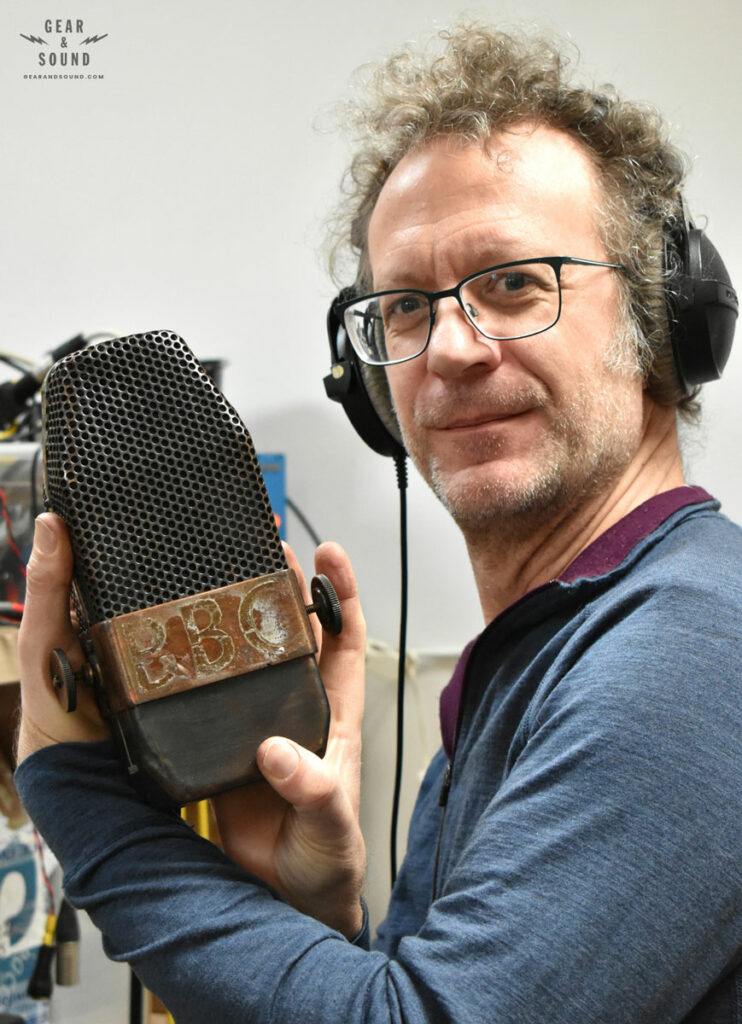
Read more about the repair of the legendary BBC Marconi ribbon microphone and the rest of the gang in part 2.
Share this article on
related reviews

Test #4 Melodium 42B + Bn, Coles 4038
Listen to the Coles 4038, new/old Melodium 42B on guitar and vocals

Test #3 Neumann M 49 V, M 49 c, TLM 103 on vocals
Vocal comparison of Neumann M 49 V, M 49 c, and a TLM 103
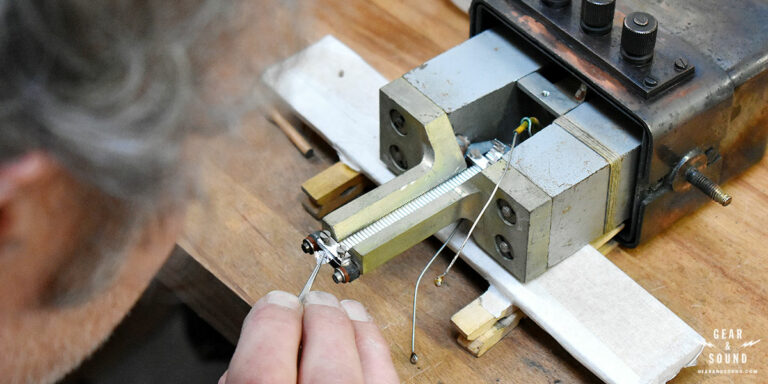
Visiting Stewart Tavener of Xaudia, Part 2
Stewart Tavener of Xaudia servicing a BBC Marconi, an RCA 44BX, a Melodium and more…
What is Gear & Sound?
We love music gear and test how it sounds.
Here you’ll find reviews, sound samples, unboxing pics, and videos of recording equipment like microphones, preamps, headphones, etc.
We also write about legendary mics and interview great people.
Read more about How we test.
Follow us on
latest reviews
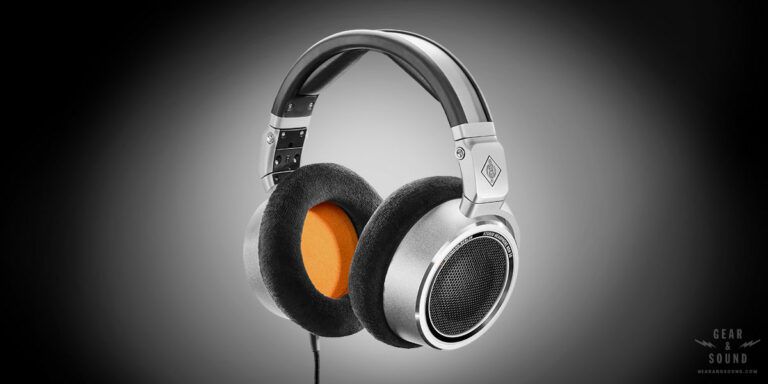
Review: Neumann NDH 30 headphones
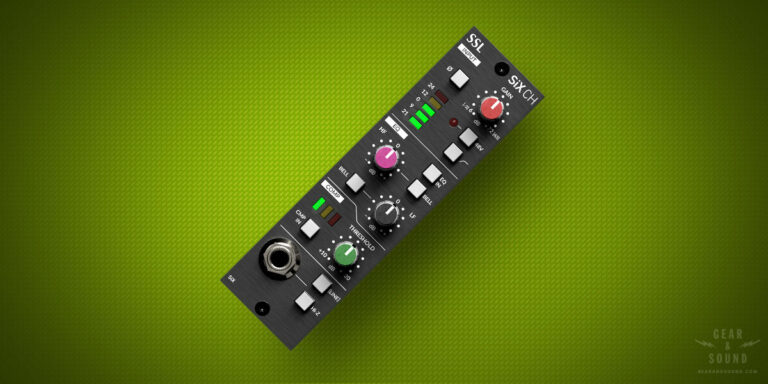
Review: SSL SiX CH channel strip
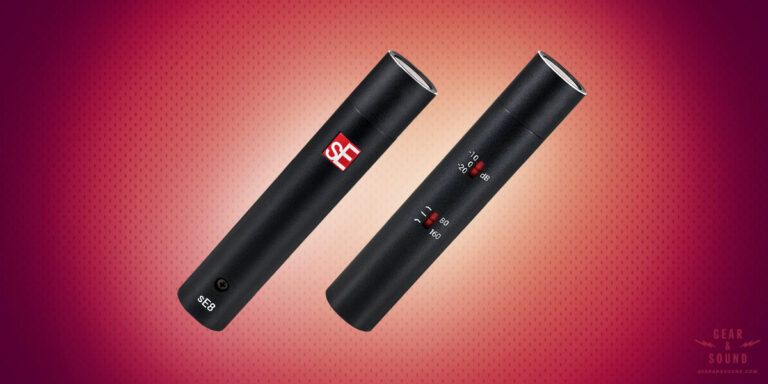
Review: sE Electronics sE8 omni microphone
latest videos

Test #4 Melodium 42B + Bn, Coles 4038

Test #3 Neumann M 49 V, M 49 c, TLM 103 on vocals
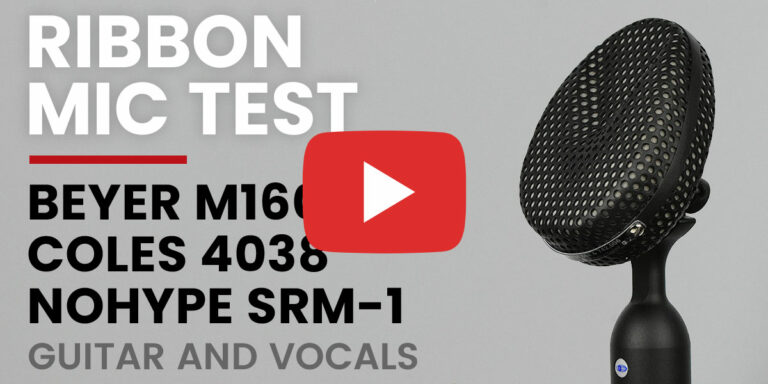
Test #2 Coles 4038, Beyer M 160, NoHype SRM-1
latest stories

Visiting Stewart Tavener of Xaudia, Part 2
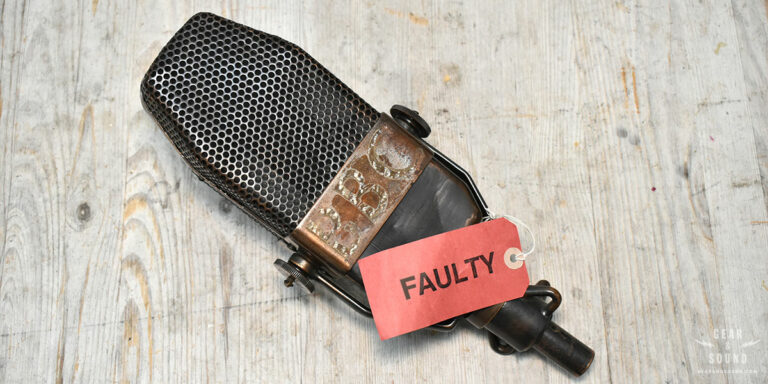
Visiting Stewart Tavener of Xaudia, Part 1
categories
get our newsletter












